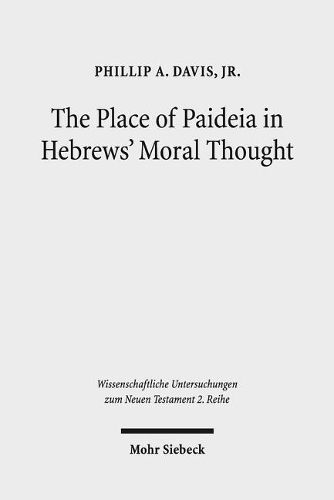Readings Newsletter
Become a Readings Member to make your shopping experience even easier.
Sign in or sign up for free!
You’re not far away from qualifying for FREE standard shipping within Australia
You’ve qualified for FREE standard shipping within Australia
The cart is loading…






In Hebrews 12:1-17 the author seeks to encourage the readers by interpreting their sufferings as paideia from God. Scholars have typically interpreted this paideia either as corrective reproof or formative training, but by examining the passage in light of Hebrews’ ethics, the ancient practice of corporal punishment, and the author’s quotation of Proverbs 3:11-12, Phillip A. Davis, Jr. shows this dichotomy to be untenable. The main problem Hebrews addresses is the danger of sinning, not apostasy per se. Yet because Hebrews rejects second repentance, paideia cannot be corrective. At the same time, ancient education had as its goal moral formation, which always involved the pain of physical punishments. The author draws on this commonplace to suggest that the pain of the audience’s sufferings should be taken as a concomitant part of their formation in the righteousness the epistle demands of them.
$9.00 standard shipping within Australia
FREE standard shipping within Australia for orders over $100.00
Express & International shipping calculated at checkout
In Hebrews 12:1-17 the author seeks to encourage the readers by interpreting their sufferings as paideia from God. Scholars have typically interpreted this paideia either as corrective reproof or formative training, but by examining the passage in light of Hebrews’ ethics, the ancient practice of corporal punishment, and the author’s quotation of Proverbs 3:11-12, Phillip A. Davis, Jr. shows this dichotomy to be untenable. The main problem Hebrews addresses is the danger of sinning, not apostasy per se. Yet because Hebrews rejects second repentance, paideia cannot be corrective. At the same time, ancient education had as its goal moral formation, which always involved the pain of physical punishments. The author draws on this commonplace to suggest that the pain of the audience’s sufferings should be taken as a concomitant part of their formation in the righteousness the epistle demands of them.